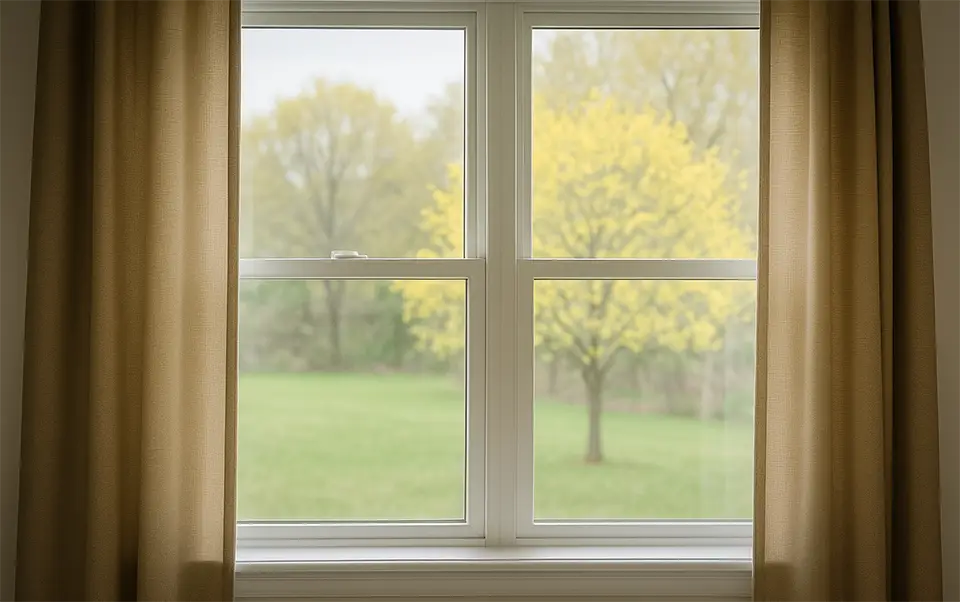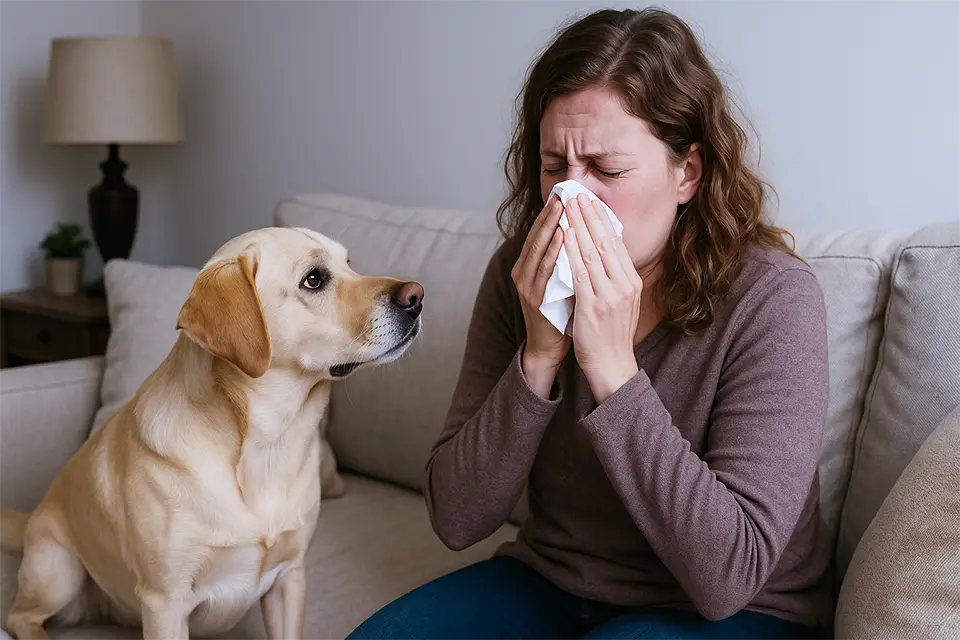Spring in Greenville is a beautiful time of year. Trees are blooming, birds are singing, and many of us are ready to throw open the windows and enjoy the warmer air after a long winter. But for allergy sufferers, spring doesn’t just bring sunshine… it also brings sneezing, itchy eyes, and a daily battle with pollen. If you or someone in your household deals with seasonal allergies, you know how quickly a lovely day can turn into a miserable one.
Many people don’t realize that your HVAC system can be one of your strongest allies in the fight against spring allergies. At Wright’s Air Conditioning, we believe your home should be a sanctuary, not a source of discomfort. In this blog, we’ll explore why allergies hit so hard in the spring, how they affect your daily life, and, most importantly, how a properly maintained HVAC system can help you breathe easier.
Why Spring Allergies Hit Hard in North Texas
Here in North Texas, we’re no strangers to allergens. Spring allergies typically kick in as early as February and can linger until early summer. The biggest culprits this time of year are tree and grass pollens. Trees like oak, cedar, and elm release lightweight pollen into the air, and because it’s so fine, it can easily travel into your home through open doors and windows and even on your clothing or pets.
Grass pollen begins to appear in late spring and can overlap with the tail end of tree pollen season. Add to that the fact that spring often brings moisture and warmth, perfect conditions for mold growth. Now, you have a triple threat for allergy sufferers.
Pollen is especially problematic on dry, windy days when it stays suspended in the air longer and can spread more easily. Thanks to climate change, allergy seasons are becoming longer and more intense, with higher pollen counts than in years past. That means even people who didn’t suffer from allergies before might now find themselves sniffling through spring.
How Spring Allergies Affect Your Home Life
Most people associate allergies with runny noses and sneezing, but the effects can go much deeper. When allergens like pollen, dust, or mold spores are present in your home, they can irritate the eyes, cause headaches, trigger asthma symptoms, and even lead to skin flare-ups like eczema. These symptoms can be especially disruptive for children and older adults, interfering with sleep, concentration, and overall comfort.
If you wake up with congestion, cough more at night, or find that your allergy medications aren’t working as well indoors, your home’s air quality could be part of the problem. The good news is there are steps you can take, starting with your HVAC system.
Using Your HVAC System to Reduce Allergies
You might not think of your air conditioner or heating system as part of your allergy-fighting strategy, but your HVAC system plays a major role in what’s circulating in your indoor air. With a few adjustments and some smart maintenance, you can significantly reduce allergens in your home.
Upgrade Your Air Filter
Your air filter is the first and most important line of defense against airborne allergens. Standard fiberglass filters might protect your HVAC equipment, but they’re not designed to trap the tiny particles that trigger allergies. Upgrading to a filter with a higher MERV (Minimum Efficiency Reporting Value) rating—ideally between 8 and 13—can dramatically improve how well your system captures allergens like pollen, dust mites, and mold spores.
If you or your family members suffer from severe allergies or asthma, consider investing in a HEPA filter, which can capture up to 99.97% of particles as small as 0.3 microns. Just make sure your HVAC system is compatible with this type of filter, as some systems may require modifications to accommodate them.
Also, don’t forget to change your filter regularly—every one to three months is ideal, depending on your home environment and whether you have pets.
Keep Windows Closed and Air Recirculating
It’s tempting to open the windows on a nice spring day, but when pollen counts are high, you invite allergens directly into your home. Once inside, those particles settle into carpets, furniture, and air ducts, where they continue to circulate long after the windows are closed again.
Instead, use your HVAC system to maintain a comfortable indoor temperature while keeping outdoor allergens at bay. Most modern thermostats have a recirculation mode that limits outside air intake and helps your filters work more efficiently. If you want fresh air without the allergens, consider adding a ventilator that brings in filtered air without letting pollen through.

Invest in an Air Purification System
A whole-home air purifier installed directly into your HVAC system can significantly improve indoor air quality. These systems work alongside your filter to capture and eliminate airborne pollutants, including allergens, bacteria, and even viruses. Unlike small plug-in purifiers, a whole-home unit treats the air throughout your entire house, not just in one room.
You can also supplement with portable air purifiers in areas where you spend a lot of time, like bedrooms or living rooms. These units are beneficial at night when allergens can build up while you sleep.
Maintain Healthy Indoor Humidity Levels
Humidity plays a big role in allergen control. When indoor air is too dry, allergens like dust and pollen remain airborne longer, making them easier to inhale. Conversely, excess humidity creates an ideal environment for mold growth and dust mites.
The sweet spot for indoor humidity is between 30% and 50%. A hygrometer can help you monitor your levels. Depending on your needs, if you find you’re consistently outside that range, it may be worth investing in a whole-home humidifier or dehumidifier. Some modern HVAC systems offer built-in humidity control for year-round comfort.
Clean and Seal Your Ductwork
Even if your filter is doing a great job, allergens can still build up in your ductwork over time, especially if there are leaks or areas where dust can collect. Leaky ducts can draw in dust, pollen, and even pests from crawl spaces or attics, distributing them throughout your home whenever the system turns on.
Having your ducts professionally inspected and cleaned every few years can help eliminate this hidden source of allergens. Sealing leaks and insulating your ductwork can also improve your system’s efficiency, helping you save money on energy bills while keeping your air cleaner.
Other Ways to Minimize Allergies at Home
While your HVAC system is a powerful tool in controlling allergies, it works best when combined with other smart home habits. Spring cleaning isn’t just for appearances—it’s essential for keeping allergens at bay.
Regular vacuuming with a HEPA vacuum, dusting with a damp cloth, and washing bedding in hot water can significantly reduce the amount of pollen, dust, and pet dander in your living spaces. If you have wall-to-wall carpet or large area rugs, they can trap allergens more easily than hard flooring. Consider replacing old carpets or using washable area rugs for easier maintenance.
Pets also play a role in spreading allergens. Even if your dog or cat doesn’t cause allergies directly, they can bring in pollen from outside on their fur. Try to keep them off beds and upholstered furniture during allergy season. Grooming them regularly helps reduce dander and shedding.
And don’t forget about yourself. After spending time outdoors, changing clothes and showering can wash away pollen before it settles in your home. These small changes, when combined with a high-functioning HVAC system, can make a big difference in how you feel.

When It’s Time to Call in the Experts
If your allergy symptoms seem worse indoors than outdoors, or if your HVAC system hasn’t been checked in a while, it might be time to bring in the pros. At Wright’s Air Conditioning, we offer a range of services to help improve your indoor air quality and system performance.
We can inspect your ductwork for leaks or buildup, recommend air purification systems, and help you select the right filters for your home. We also offer seasonal HVAC tune-ups to ensure everything is running efficiently and cleanly so you’re not breathing in recycled dust and allergens.
Indoor air quality is a growing concern for homeowners, and we believe everyone deserves to feel safe and comfortable in their own homes—especially during allergy season.
Final Thoughts
Spring allergies can be tough, but you don’t have to suffer through them. With the right HVAC setup and a few mindful habits, your home can be a true refuge from the sneezing, itching, and wheezing that come with the season.
At Wright’s Air Conditioning, we’re proud to help families in Greenville and surrounding areas enjoy cleaner air and greater comfort. Whether you’re looking for a simple filter upgrade, a full duct cleaning, or a whole-home air purifier, our team is here to help. Call us today at (903) 455-5662 to learn how we can improve your home’s air quality… and your peace of mind.

